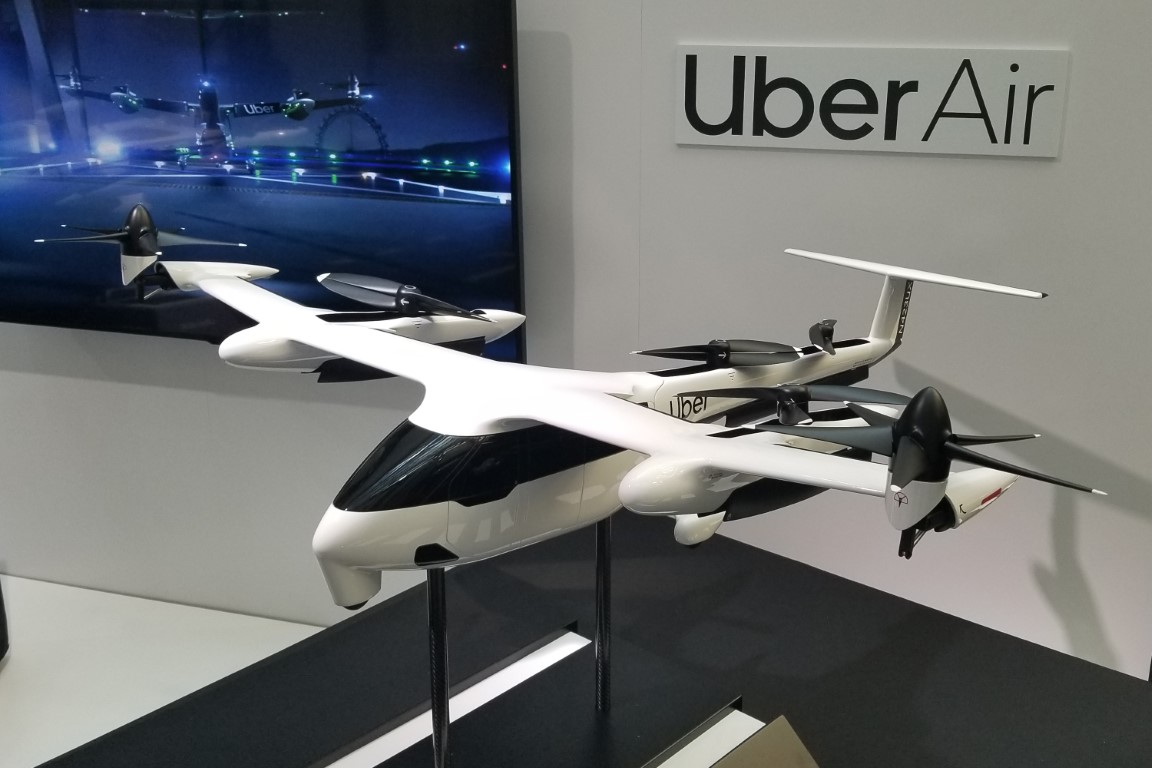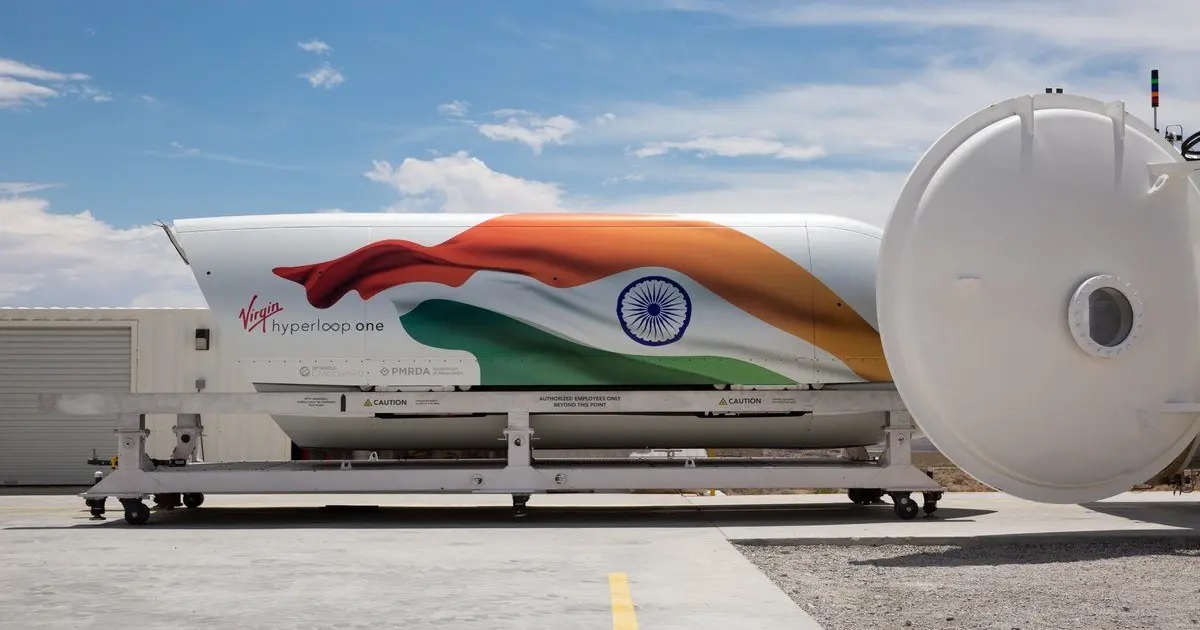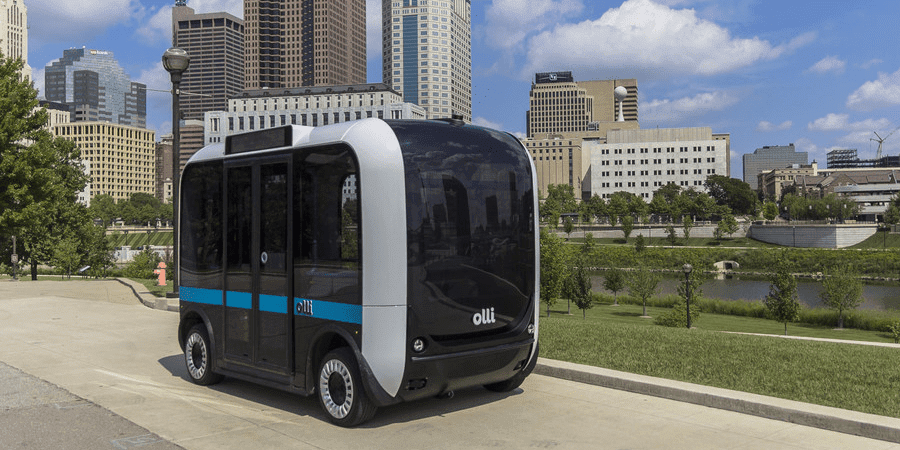As towns and cities are getting bigger and busier our roads are becoming ever more congested. There are more cars on the road now than ever before, so people are being actively encouraged to use public transport when possible to lighten the load and to ease the pressure Buses, Trains, Trams and Taxis do a great job of moving multiple people around with the use of a single vehicle but it's not hard to see that this tech is dated and do a serious upgrade today we're looking at the future of public transportation and the vehicles that will change how we move around our cities for good.
Uber Elevate
Uber Elevate is the given name of Uber’s latest mission to develop and deploy an air based taxi service. Uber is working with a number of aviation tech companies to bring their visions to life and say that we might see their elevate services popping up in and around cities sooner than you might think. So what exactly is Uber Elevate? Uber Air will be a network of small electric aircrafts that will offer ride share flights throughout the world's largest cities, the EVT electric vertical takeoff and landing vehicles that they plan to use are quieter safer and more affordable than helicopters and will also be significantly more environmentally friendly.
The system will work by users ordering an air taxi much in the same way that they would order a traditional Uber. Once they've selected their Uber Air right the craft will fly to the nearest sky port which will be dotted all over building roofs and potentially inner-city parks. The user will board the craft and fly to the closest sky port to their chosen destination from there a grounded Uber taxi will be ready and waiting to complete the final stages of the users journey. Using air travel means that people will be able to move around cities quicker and with less stress.
Uber estimates that a trip between LAX to the Staples Center during rush hour traffic can be reduced from one and a half hours to less than thirty minutes using Uber Air. An estimation that includes ordering the Uber Air and transfers between Sky pads the flight time across LA itself will only take around four minutes.
Also Read: Apple Car Details, Release Dates, Features, Price and Every Update about Apple Car
Uber Air is expected to fully launch sometime in 2023 which sounds like an optimistic prediction at first glance however they're already planning a series of demonstration flights in Melbourne Dallas and Los Angeles. It has not hinted at what it might cost users to travel using their new venture but they have said in numerous interviews that they want the airborne taxi service to be affordable for everyone and not just be a novelty reserved for the rich and famous.
Hyperloop
High-speed trains have been grabbing plenty of attention over the past decade or so but there appears to be a new kid on the block that promises to be even faster, more durable and less taxing on the environment. The Hyperloop is the envisioned concept of Elon Musk and is currently in development. The Hyperloop aims to see passengers traveling at speeds of over 700 miles per hour in floating pods through giant low-pressure tubes. You see overcoming air resistance is one of the biggest uses of energy for any form of high-speed travel this is why trains are shaped like bullets to be more aerodynamic and planes fly at high altitudes where the air is thinner.
To create this same effect inside a tunnel the Hyperloop encloses the passenger pods inside of tubes that have had all the air sucked out effectively allowing the pulps to travel without any or with very little air resistance. Musk's original plans for the Hyperloop suggests air pressure so low that the drag would be 1,000 times less than what is felt at sea level. This is equivalent of flying a plane at around 150 thousand foot. You might be wondering why this is so important and it basically all comes down to speed. Less air pressure means less drag and less drag means more speed.
The Hyperloop pods used in Musk's model will work by using compressed air pressure to float just above the tube surface on a pair of air bearing skis. Other mock-ups of the Hyperloop have included the use of magnets to get the pods levitating however the Air Ski version seems to be the most viable option to get the pod moving. An external linear electric motor will give it a little push until it reaches high subsonic velocity where it will then be left to coat at around 700 miles per hour until it reaches its destined. Every 70 miles or so the pub will need a small boost from the electric motors but because there is such little friction, once it gets going there really isn't anything slowing it down. a standard capsule is set to carry 28 passengers with other larger versions aiming to carry up to 40. Musk has also said that if they lay big enough tubes the Hyperloop may have commercial Freight use as well.
Sky Tram
If there's one thing that people hate about public transport it's all of the constant stopping and starting. Sky Tram plans to solve this issue by creating a system that allows for seamless point-to-point travel between destinations by giving you the option to bypass stations along the way. Users of the Sky Tram can travel at high speed for the duration of their trip only slowing down when it's time to pull into their chosen stopping point. The ultra lightweight two passenger pods travel along suspended rails using something called Maglev technology. Maglev allows the pods to actually levitate above the rails much like the pods do inside of Musk's Hyperloop. Because there are no contact points between the pods and the rails, there's no friction. This not only makes kite ran fast and efficient but also reduces wear and tear. Very little power is needed to get the pods moving and the manufacturer says that the roof-mounted solar panels produce more than enough electricity to cover the propulsion.
The Sky Tram network is set to be entirely computer-controlled and is putting a lot of attention on being as user-friendly as possible passengers of the system will be able to order a pod to a specific location for a certain time or they can go to one of the larger pod, rank stations where there'll be a queue of pods waiting for them. Once onboard the pod will recognize passengers, Sky Tram cards and cue up music, movies or raps accordingly. It will then pick up speed and re-enter the main line of travel until the desired destination is reached. One of the most important advantages of the Sky Tram over other similar transport concepts is its lightweight and modular design.
Also Read: The $4000 Electric Car Dominating China
The rails on which the pod rider locks it on poles that aren't much bigger than a telephone pole. The entire network is completely modular and snaps together in an almost Lego-like fashion. This not only keeps manufacturing costs to a minimum but also means that the lines can be built incredibly quickly using low skilled technicians.
The first full-scale use of the Sky Tram is planned to take place in Tel Aviv Israel however there are sub scale versions under construction in California and Texas.
Olli 2.0 Autonomous Shuttle
The first edition of the Olli autonomous shuttle bus was revealed some four years ago in 2016. Four years of time, effort and development later and the company's 2.0 version is already in full swing eager to go into full-scale production. Local motors and their Olli bus are familiar figures in the autonomous vehicle scene but in the public eye they seem to be vastly overshadowed by the likes of Argo AI and Uber the bigger companies that are all pursuing for autonomous taxis that share the same design as our current city cars Olli 2.0 might not be the most sleek looking autonomous vehicle due to feature on our city roads but it might just be the best.
Like the Ollie 1, The 2.0 version shares the same boxy shape 25 miles per hour top speed and level 4 autonomous capability which might leave you asking what's actually changed? Well for starters the range has been boosted upto a hundred miles on a single charge which is a huge improvement over its older sibling. The Ollie 2.0 is also made up of 80% 3D printed parts and now runs off electric hub motors as opposed to axle based. The Ollie 2.0 really starts to stand out when you look at its improved user interface and customizable options. Local Motors said that they could potentially customize the Ollie 2.0 to anybody spec given that they can partner up with the right people the interior can be bespoke made to suit different needs as well.
While the Ollie's main purpose is shuttling busy city bodies around if say a hospital wanted to use an Ollie to move patients between wards. The manufacturer could install fewer seats and add safety fixtures for hospital beds. I believe that this flexible design approach will give the Ollie 2.0 a massive edge over its autonomous shuttle competitors and in its current form it will probably be the first to gain widespread acceptance from public transport users.
Segway S Pod
Segway has fully established itself as the category leader in short distance transportation from their revolutionary Monowheel Z10 to their vastly popular push scooters. In their own words they are changing the way people move from place to place. The company describes its latest invention the Segway S Pod as a game-changer for personal transportation and most its intended uses primarily for large enclosed campuses such as Airports and Amusement Parks the S port could become the next big player in the personal public transport sector. Currently the only personal transport offerings in cities are electric scooters and bicycles so there's certainly room for something a little bigger, better and more comfortable. Like the original Segway, the S pod is a self-balancing vehicle for upright riding but instead of standing, the riders are placed into a super relaxed seating position.
The S pod still moves backwards and forwards by the riders shifting their center of gravity although the acceleration is controlled using a convenient little speed dial as opposed to leaning alone. The styling of this new personal transporter is said to be inspired by the Gyro Spheres used in the Jurassic World movie although the S Pod is definitely far more egg-shaped than spherical. The S pods top speed is 24 miles per hour which doesn't sound all that fast but trust me it does feel it when riding in such a laid-back position.
Also Read: How The Virgin Hyperloop One Will Revolutionize Transportation
Segway is saying that the S Pod is their first step towards their goal of bringing new transportation options to cities and plans to start rolling them out to buyers by late 2022. Ok the S Pod is an exactly breaking new ground we've all been seeing this Segway tech for years now however it will be incredibly interesting to see what a difference this new approach to personal public transport will make to our busy inner cities.
Hope you guys liked this post which peeks into our future. Do consider sharing it with your friends and family as well.











0 Comments